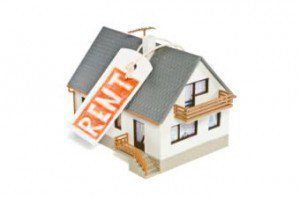 While just 20.9% of homeowners with a mortgage were considered burdened according to data from the Census Bureau American Community Survey, which provides a 10-year look at the trends from 2008 to 2018, 40.6% of rental unit residents are spending over 35% or more of their monthly household income on rent and utility bills as of 2018.
While just 20.9% of homeowners with a mortgage were considered burdened according to data from the Census Bureau American Community Survey, which provides a 10-year look at the trends from 2008 to 2018, 40.6% of rental unit residents are spending over 35% or more of their monthly household income on rent and utility bills as of 2018.
The Census Bureau defines a cost-burdened owner-occupied household as one where the homeowner spends 35% or more of their monthly household income on mortgage payments, utility bills, real estate taxes, property insurance, and any required condominium or mobile home fees.
The Census Bureau note that this is a drop of only 0.2 percentage points from the previous year 2008 when 40.8% of renters were burdened. The number of metro areas where more than 40% of renters were burdened in 2018 was 81, the same amount as a decade earlier. In 2008, there were 43 metro areas where at least 40% of homeowners with a mortgage were burdened. There were none in 2018. In 2018, 53 metro areas reported that over 10% of homeowners without a mortgage were burdened, compared with 85 metro areas in 2008.
Rents have been rising, according to data from CoreLogic. Rents increased 2.9% year over year in July 2019, down from a 3.1% increase in July 2018, according to the latest CoreLogic Single-Family Rent Index (SFRI). Single-family rents started climbing steadily in 2010, and during the past 12 months annual rent increases have stabilized, fluctuating between 2.9% and 3.2%.
According to CoreLogic, the index’s overall growth in July 2019 was propped up by low-end rentals, defined as properties with rents 75% or less of a region’s median rent. Rents on lower-priced rental homes increased 3.5% year over year and rents for higher-priced homes, defined as properties with rents more than 125% of the regional median rent, increased 2.7% year over year. The pace of annual rent growth for lower-priced rental homes fell by 0.6 percentage points from 4.1% in July 2018, the largest deceleration in rent increases for this price point in a little over a year.

 DSNews The homepage of the servicing industry
DSNews The homepage of the servicing industry









